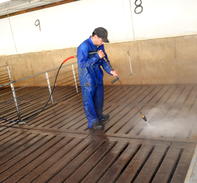Classical and African Swine Fever are the two most feared swine diseases worldwide.

According to Dr Mary-Louise Penrith’s article, History of ‘swine fever’ in Southern Africa, the diseases are caused by two different viruses that produce the same symptoms making it difficult to distinguish between them.
Both are highly contagious and deadly, causing mortalities of up to a hundred percent. Pigs that manage to survive the disease remain contagious.
Symptoms
Symptoms are not specific and can easily be confused with other diseases, so an outbreak has to be confirmed through laboratory tests. The disease typically causes high fever and rapid death.
Farmers by law need to report any suspicion of an outbreak to their local state veterinarian or animal health technician, who will investigate the outbreak and collect samples for laboratory analysis. Signs that a pig may be infected usually develop five to nine days after exposure with the disease.
The most noticeable signs, according to the South African Pork Producers Organisation’s Pigs for Profit manual are: A high fever that may develop a few days before any other symptoms. Lots of pigs dying of all ages. Pigs die quickly, between one to ten days after becoming ill.
Pigs do not want to eat. Lethargy, with pigs lying down all the time. Ears, the legs and the lower part of the belly becomes flushed, turning red to purple. Discharges from the eyes or nose, vomiting, diarrhoea or constipation.
Rapid breathing and difficulty in breathing. Weakness of the hind legs, difficulty walking. Pain in the abdomen. Pregnant sows often abort at any stage of pregnancy.
How do Pigs Get Infected?
Pigs are infected when they come into contact with saliva, urine, faeces or blood of infected pigs; or when they get into contact with people, tools, vehicles or clothing that might have become contaminated with the disease. African Swine Fever may also be contracted when pigs get bitten by infected soft ticks.Treatment
There is no treatment. Vaccinations against Classical Swine Fever is not yet available in South Africa and does not exist for African swine fever. Once an outbreak is confirmed, all infected and healthy pigs within the herd are destroyed in a process referred to as “stamping out”.
Farmers should not attempt “stamping out” on their own, as it requires the proper disposal of all pigs on infected premises as well as thorough cleaning and disinfection of infected premises. The virus may survive on a premises for months if not properly destroyed. Affected farms and properties are quarantined to prevent the spreading of the disease to other pig farmers.
Under no circumstances may pigs or their products be sold or allowed to leave the property from quarantined farms or any herd or area where there has been a suspected outbreak.
Prevention
Strict biosecurity measures are needed to prevent herds from coming in contact with possible contaminants, such as people, tools, vehicles, feed, clothing, tools and sick pigs. Kitchen and garden waste should be cooked for at least an hour to ensure it does not contain these viruses, even kitchen waste that only contains vegetables because it may have been in contact with raw pork.
In South Africa, there are defined African Swine Fever control areas in Limpopo, Mpumalanga, North West and Kwa-Zulu Natal, where the disease occurs in wild pigs all the time. These areas are subjected to movement restrictions to prevent the disease from spreading to unaffected areas in the country.
Even though these viruses do not affect people, infected pork should not be eaten. The high fever and bleeding associated with the viruses will make the meat taste unpleasant and unfit for human consumption.
By Glenneis Kriel